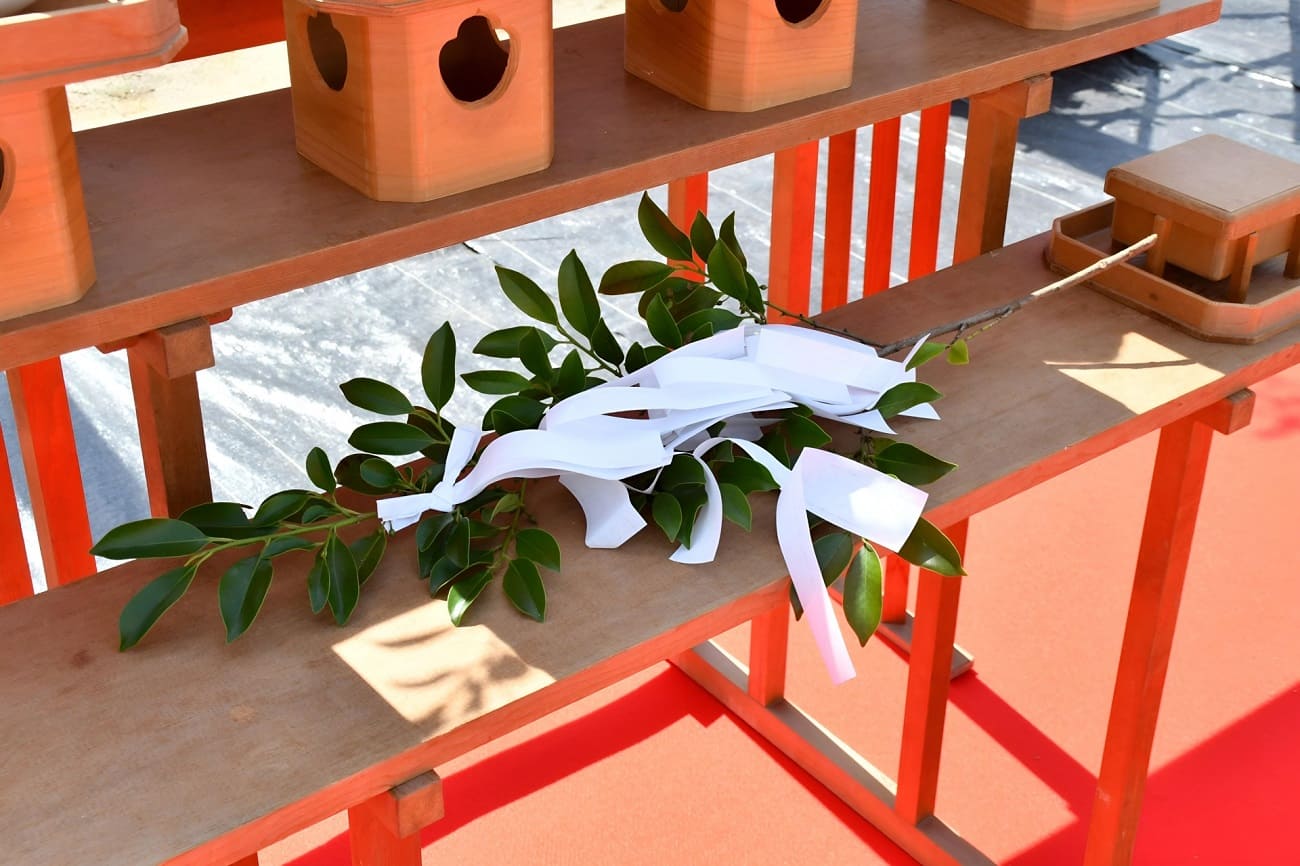If you’ve ever visited a Shinto shrine in Japan, you might have noticed a leafy evergreen branch placed near the altar or used during rituals. This sacred plant is called “sakaki” (榊), a tree deeply rooted in Japanese culture and religion. But what exactly is sakaki? How is it used in rituals, and does it appear outside shrines? Interestingly, sakaki also makes an appearance in games like the Nioh series!
In this article, we’ll explore sakaki’s meaning, its role in Japanese rituals.
What Is Sakaki?
Characteristics of Sakaki

Sakaki is an evergreen tree native to Japan, known for its sturdy branches and shiny green leaves. Its name “榊” translates to “sacred tree,” symbolizing its divine connection in Shinto beliefs. The tree is often planted near shrines and is considered a bridge between the human and spiritual worlds.
Sakaki in Japanese Myths

Sakaki has long been associated with Shinto mythology. According to the Kojiki, Japan’s oldest historical text, sakaki branches were used in the myth of Amaterasu, the sun goddess, to coax her out of hiding. The sacred tree has since become a tool for worship and purification in Shinto practices.

This is the story of “Amanoiwato”.
If you watched the anime “Oshi no ko”, you may remember it.
Sakaki in Rituals

Sakaki is used for rituals a lot!
Symbolism of Sakaki in Shrines

In Shinto shrines, sakaki branches are used as offerings to gods, symbolizing respect and purity. They are often adorned with paper streamers called shide and placed on the altar during rituals. The use of sakaki represents a connection between people and deities.

If you want to know about Shide (zigzag paper),
check the article below.
How Sakaki Is Used in Rituals

The sakaki branch is central to several Shinto rituals. One of its most common forms is the tamagushi, a sakaki branch decorated with shide, which is offered to the gods as a sign of reverence and gratitude.

Beyond tamagushi, sakaki is also used in other sacred items, such as ōnusa and himorogi. The ōnusa is a purification tool made of sakaki branches, often used to cleanse people or spaces during ceremonies. Himorogi, on the other hand, are temporary sacred spaces created with sakaki branches to welcome deities. The tree’s versatility in Shinto rituals highlights its importance in Japanese religious practices.
Sakaki Beyond Shrines

Sakaki is not limited to shrines. Many households in Japan place sakaki branches in small altars called kamidana to honor deities and ancestors. These altars are often found in homes, businesses, and even workshops, serving as a daily reminder of spiritual presence.
Sakaki in Gaming: Nioh Series

Interestingly, sakaki also appears in the Nioh game series, set in Japan’s Sengoku period. In the game, sakaki branches are depicted as sacred tools used for purification and protection. This inclusion reflects the deep cultural and historical significance of sakaki, connecting players with Japan’s spiritual traditions.
Sakaki Q&A
- QIs sakaki used in festivals?
- A
Yes, sakaki often plays a role in Shinto festivals, where it’s used in rituals and offerings.
- QIs sakaki a common tree in Japan?
- A
Sakaki is native to Japan and can often be found near shrines or in sacred forests.
Conclusion
Sakaki is more than just a tree; it’s a sacred symbol deeply woven into Japan’s culture, mythology, and rituals. From its role in Shinto shrines to its surprising appearance in video games like Nioh, sakaki continues to connect the past and present, the sacred and the everyday.
If you ever visit a shrine or play a game featuring sakaki, take a moment to appreciate this unique and meaningful part of Japanese heritage.

If you are interested in Japanese culture, you may love these games!
Let’s play!

Yes! Let’s play NIOH games!





Comments